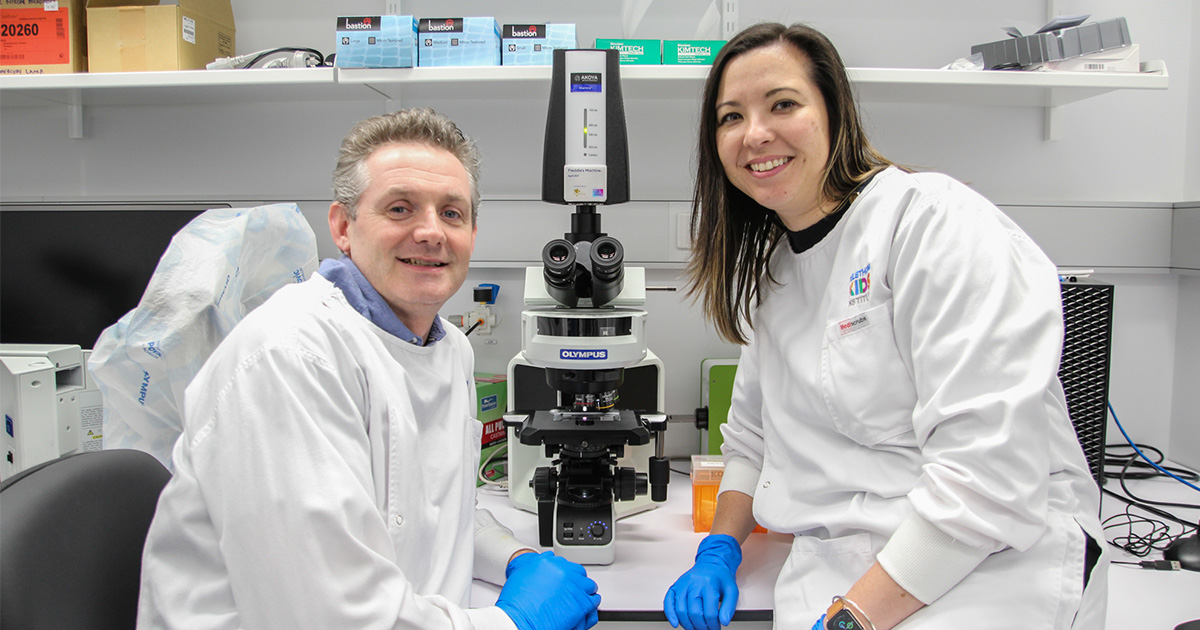Search
Research
Coffee and tea consumption during pregnancy and risk of childhood acute myeloid leukemia: A Childhood Leukemia International Consortium (CLIC) studyWe investigated the potential association of maternal coffee and tea consumption during pregnancy with childhood acute myeloid leukemia risk
Research
Targeting cytokine- and therapy-induced PIM1 activation in preclinical models of T-cell acute lymphoblastic leukemia and lymphomaIL7 and glucocorticoids coordinately drive aberrant activation of PIM1 and suggests that T-ALL and T-LBL patients could benefit from PIM inhibition
Research
Germline Elongator mutations in Sonic Hedgehog medulloblastomaGenetic predisposition to proteome instability may be a determinant in the pathogenesis of paediatric brain cancers

News & Events
Finding new treatments for rare brain cancers in infantsThe WA Kids Cancer Centre has secured $1.1 million in funding from the Medical Research Future Fund’s (MRFF) Paediatric Brain Cancer Research Stream 2 to develop more effective and less toxic treatments for rare brain cancers in infants.
Research
Parental occupational pesticide exposure and the risk of childhood leukemia in the offspring: Findings from the childhood leukemia international consortiumMaternal occupational pesticide exposure during pregnancy and/or paternal occupational pesticide exposure around conception have been suggested to increase...
Research
Fetal growth and childhood acute lymphoblastic leukemia: Findings from the childhood leukemia international consortiumThe evidence that accelerated fetal growth is associated with a modest increased risk of childhood ALL is strong and consistent with known biological...
Research
Parental occupational exposure to engine exhausts and childhood brain tumorsIncreased risks were observed for maternal exposure to diesel exhaust any time before the child's birth and paternal exposure around the time of the child's...
Research
Cancer Survival and Excess Mortality Estimates among Adolescents and Young Adults in Western Australia, 1982-2004: A Population-Based StudyA cancer diagnosis in adolescents and young adults conferred substantial survival decrement.
Research
Parental occupational exposure to engine exhausts and childhood brain tumorsParental occupational exposure to engine exhausts and childhood brain tumors.
Research
Parental occupational exposure to exhausts, solvents, glues and paints, and risk of childhood leukemiaIt is unknown whether parental occupational exposure to chemicals before during and after pregnancy increases the risk of acute lymphoblastic...
